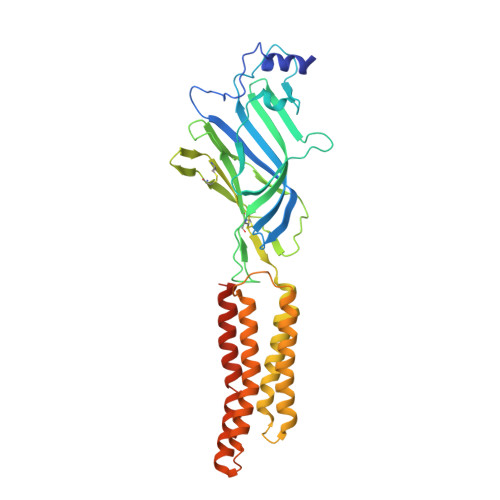Crystal structure of human glycine receptor-alpha 3 bound to antagonist strychnine.
Huang, X., Chen, H., Michelsen, K., Schneider, S., Shaffer, P.L.(2015) Nature 526: 277-280
- PubMed: 26416729
- DOI: https://doi.org/10.1038/nature14972
- Primary Citation of Related Structures:
5CFB - PubMed Abstract:
Neurotransmitter-gated ion channels of the Cys-loop receptor family are essential mediators of fast neurotransmission throughout the nervous system and are implicated in many neurological disorders. Available X-ray structures of prokaryotic and eukaryotic Cys-loop receptors provide tremendous insights into the binding of agonists, the subsequent opening of the ion channel, and the mechanism of channel activation. Yet the mechanism of inactivation by antagonists remains unknown. Here we present a 3.0 Å X-ray structure of the human glycine receptor-α3 homopentamer in complex with a high affinity, high-specificity antagonist, strychnine. Our structure allows us to explore in detail the molecular recognition of antagonists. Comparisons with previous structures reveal a mechanism for antagonist-induced inactivation of Cys-loop receptors, involving an expansion of the orthosteric binding site in the extracellular domain that is coupled to closure of the ion pore in the transmembrane domain.
Organizational Affiliation:
Department of Molecular Structure and Characterization, Amgen Inc., 360 Binney Street, Cambridge, Massachusetts 02142, USA.

















